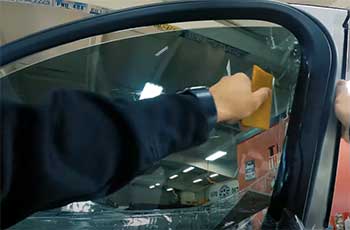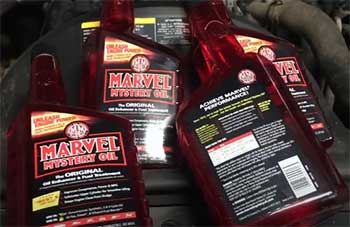As you know, not all car window tints are created equal. This brings us to an interesting comparison between two products from one of the industry’s leading brands: 3M Obsidian tint and 3M Crystalline tint.
If you’ve been considering one of these for your vehicle, you’re in luck. We’re going to dive into a detailed comparison, laying out the pros and cons of each, all in an attempt to help you make an informed decision.
A Brief Comparison Table
Here’s a comparison table of 3M Obsidian and Crystalline Tint.
| Aspects | 3M Obsidian Tint | 3M Crystalline Tint |
|---|---|---|
| Heat Rejection | Good | Excellent |
| UV Protection | High | Highest (99.9%) |
| Visibility | High | Very High |
| Price | Affordable | Premium |
| Installation | Easier | Requires Expertise |
| Technology | Non-metallic, Nano-carbon black | Multi-layered Nano-technology |
| Durability | Good | Excellent |
| Color Stability | No Fade to Purple | No Fade to Purple |
All About 3M Obsidian Tint
First, let’s take a look at 3M Obsidian tint. This product has become a popular choice for many car owners, thanks to its advanced technology and affordable pricing.
- Pros of 3M Obsidian Tint

Obsidian tint has plenty to offer.
Its non-metallic, nano-carbon black technology ensures the tint will never fade to purple, a common issue with cheaper window tints.
It also provides excellent heat rejection and UV protection, ensuring your car’s interior remains cool and safe from harmful rays.
Another plus?
The high-visibility Obsidian tint provides. Even with the darkest VLT (Visible Light Transmission), you won’t lose sight of the road.
- Cons of 3M Obsidian Tint
Despite the benefits, Obsidian tint is not without its drawbacks. The heat rejection is not as high as other high-performance films.
It also lacks the multi-layered technology found in other premium products like 3M Crystalline.
Also Read: Differences Between Maxpro And 3M Tint.
A Close Look at 3M Crystalline Tint
Next up is the 3M Crystalline tint, a premium window film. Known for its advanced multi-layered technology, Crystalline is touted as the “pinnacle of high performance.”
- Pros of 3M Crystalline Tint

Crystalline tint boasts a multi-layered nano-technology that provides superior heat rejection, despite its light appearance.
It blocks up to 60% of the heat, keeping your vehicle cool even on the hottest days.
It also offers a whopping 99.9% UV protection, one of the highest in the industry.
Additionally, Crystalline tint is a non-metallized window film, meaning it won’t interfere with your car’s electronics and GPS systems.
- Cons of 3M Crystalline Tint
On the downside, Crystalline tint comes with a higher price tag due to its advanced technology and superior performance. It also requires expert installation, adding to the overall cost.
Key Differences Between 3M Obsidian And Crystalline Tint
Now that we’ve introduced 3M’s Obsidian and Crystalline tints, let’s examine their key differences. Each product brings its unique set of features to the table, and understanding these variations will help you decide which one is right for your needs.
- Heat Rejection
Heat rejection is a primary reason many people choose to tint their car windows. In this department, Crystalline takes the lead.
3M Crystalline’s multi-layered nano-technology provides superior heat rejection, blocking up to 60% of solar heat.
On the other hand, Obsidian, while still offering impressive heat rejection, falls short of Crystalline. If you live in a particularly hot climate or spend a lot of time in your car, Crystalline may be the better choice for a cooler ride.
- UV Protection
When it comes to UV protection, both Obsidian and Crystalline shine. However, Crystalline goes one step further, providing a nearly perfect 99.9% UV protection.
This could be a significant selling point for those concerned about the harmful effects of UV radiation on both their skin and car’s interior.
Obsidian also provides UV protection but doesn’t quite match the near-total blockage Crystalline offers.
- Visibility
Visibility is another crucial factor in window tints. Both Obsidian and Crystalline provide good visibility, but they approach it differently.
Obsidian tint, even with the darkest VLT, does not significantly impair vision, ensuring you maintain a clear view of the road.
Crystalline tint, on the other hand, is known for its almost transparent appearance. This means even with its high heat and UV rejection, it doesn’t darken your windows as much as other tints, ensuring excellent visibility during the day and night.
- Price
Price is often a deciding factor when choosing a window tint. In this regard, Obsidian holds the edge. It’s a more affordable option, offering excellent benefits at a lower cost.
Crystalline, with its advanced technology and superior performance, comes with a higher price tag. However, for those willing to invest, the added benefits may justify the additional cost.
- Installation
Lastly, let’s talk about installation. Crystalline tint requires professional installation due to its complex multi-layered technology. This adds to its overall cost but ensures optimal performance and durability.
On the other hand, Obsidian tint is easier to install and may not necessitate professional help, thus reducing the overall expense. See for yourself!
However, for the best results, it’s always advisable to hire a professional.
In conclusion, both 3M Obsidian and Crystalline tints have their strengths. Your choice depends on what matters to you most: is it heat rejection, UV protection, visibility, cost, or ease of installation?
Whichever it is, 3M has got you covered.
Also Read: Comparison of 3M Crystalline And Formula One Stratos Window Tint.
Frequently Asked Questions (FAQ)
To help you further, we’ve included answers to some frequently asked questions:
Absolutely! Crystalline tint offers excellent heat and UV rejection, and its non-metallized composition ensures it won’t interfere with electronics.
Many believe 3M Crystalline is the best tint due to its superior heat rejection, UV protection, and non-metallized composition. Its multi-layered nano-technology also sets it apart from other window tints.
3M Crystalline has a unique, barely-there appearance while still providing excellent heat rejection. This differentiates it from other darker tints.
3M Crystalline tint is a premium window film made with multi-layered nano-technology. It offers superior heat rejection, UV protection, and won’t interfere with electronic devices.
Conclusion
Choosing between 3M Obsidian and Crystalline ultimately comes down to your individual needs and budget. Both are top-tier products from a reputable brand, offering great protection and quality.
While Obsidian is an excellent affordable choice, Crystalline’s advanced features may make it worth the extra cost for some.
Remember, the best window tint is the one that meets your specific needs, whether it’s heat rejection, UV protection, or simply improving your vehicle’s aesthetics.

